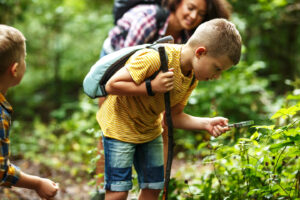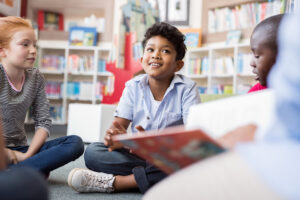Back-to-school time this year will be challenging for educators, parents, and especially children. Here are some tips to help you prepare.
The fall of 2020 will find all of us scrambling to adapt to new ways of handling familiar back-to-school events. Formal announcements from school districts nationwide have been trickling in, leaving many to wonder what type of school experience awaits. It is important to offer comfort to your children as they deal with this uncertainty.
By September, most students will have been away from school for over six months. How students adjust to an even partial return to school grounds will depend on several factors:
- Attitude toward school generally: Students who genuinely missed school and are happy to be back will likely adjust to the return to school better than those who welcomed home-schooling or are anxious about going back to a classroom.
- Response to routine: Getting back to “normal” will be easier for students from homes where parents could establish a structure similar to an actual school day when home-schooling.
- Flexibility: The new standards in place (i.e., mask wearing and social distancing) may be less challenging for children who display some degree of flexibility and ability to “roll with it.” Students who are more resistant to change will need extra care in transitioning back to school.
It will be helpful to keep those three considerations in mind when considering how to provide guidance for your child.
For students who are excited about fall, it may be necessary to temper their expectations by gently reminding them things will be very different. Even for those whose districts will resume on-site learning, smaller class sizes may mean less interaction with familiar faces, and social distancing will mean changes to recess and lunchtime.
If your child is anxious about contracting the virus while in school or is expressing fear about returning to the classroom, there are several resources available to help manage anxiety. Health professionals agree that the most important thing a parent can do is maintain an open dialogue with your child. It’s important to focus on positive steps you can do to gain some control over the virus, such as proper handwashing and wearing a mask.
For those who wholeheartedly embraced a lack of routine, experts suggest that you do everything you would typically do to prepare your child after the summer vacation. The catch is to start this process earlier and dedicate more time and resources.
The usual tips – reestablishing family meal routines, buying school supplies, setting an alarm to gradually wake your child earlier on each of the remaining days of vacation, enforcing bedtime rules, and organizing a study area all apply, but perhaps times two.
As for all the new rules to follow, if you haven’t already been taking small trips or get-togethers while wearing masks and following social distancing protocols, it would be helpful to start, as long as you continue following your state’s directions.
What to expect in September
In its Considerations for Schools, the Centers for Disease Control (CDC) separate school-related activities into low, more, and highest risk categories. It is expected that school districts will create a mix of virtual and on-site learning activities in response to how COVID-19 is affecting their communities. It seems clear that full-sized classes, sharing supplies, and extra-curriculars will not happen.
The online learning experiments that most students participated in this past spring hopefully created a foundation that will help students reacclimate in those areas that move toward partial or full remote schooling. For those students who will be back in the classroom, they can expect to spend at least some of the first months playing catch up.
Teachers will be tasked with addressing the differences in academic achievement of students in the same class. Mandated home schooling increased the typical learning gap seen in most classrooms, and with a lack of year-end assessments, teachers will have to perform “instructional triage” to make sure students receive the help they need.
Find help at the Learning Lab
Whether most teaching takes place virtually or in person this fall, students are expected to be challenged by all the changes caused by the pandemic. If you are concerned about how your child will manage once school starts, the Learning Lab can help.
Since March, we have offered in-person and virtual one-on-one intervention to assist students with tutoring in reading, writing, math, reading comprehension, and vocabulary/language development. We will work with you to find the appropriate level of support your child needs, depending upon the solution your school selects. Some options are alternate learning days support and services to help children with learning differences, online and in person if allowed.
We can help prepare your student by assisting with executive function skills, which will help with the transition back into a routine. Even taking small steps like setting up a calendar and task management system now can make a huge difference when school starts.
At Learning Lab, we can provide the insight and assistance children and their parents need to meet the unique challenges of the upcoming school year. We support the full ecosystem of children who are smart but struggle in a traditional school setting. Find out how we can help your child.





